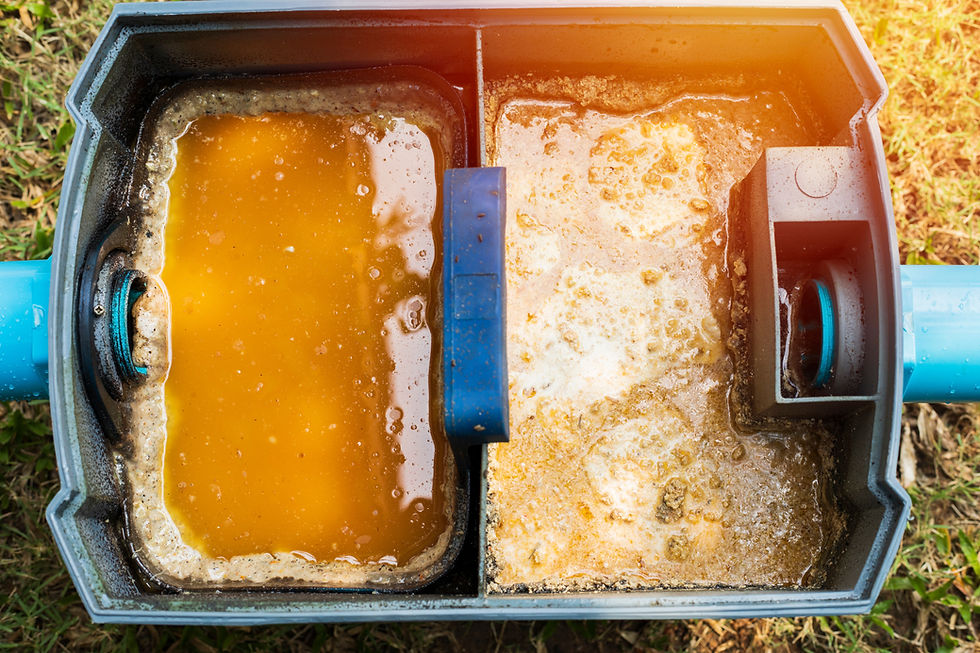Fats, oils, and grease (FOG) are common byproducts in both residential and industrial settings. When improperly disposed of, they can accumulate in sewer systems, leading to blockages, sanitary sewer overflows (SSOs), and environmental hazards. Effective FOG control is essential for municipalities and industrial clients to maintain efficient wastewater infrastructure and protect public health.
Understanding FOG: What Are Fats, Oils, and Grease?
FOG refers to the fatty substances derived from animal and plant sources used in cooking and food preparation. Common sources include:
Animal Fats: Lard, butter, and meat drippings.
Vegetable Oils: Olive oil, canola oil, and margarine.
Dairy Products: Milk, cream, and cheese residues.
These substances are liquid when hot but solidify upon cooling. When washed down drains, they can adhere to pipe walls, leading to significant blockages over time.
The Science Behind FOG Accumulation
In wastewater systems, FOG undergoes physical and chemical changes:
Cooling and Solidification: As FOG cools, it solidifies and attaches to sewer pipe walls.
Saponification: FOG can react with calcium and magnesium in wastewater to form soap-like compounds, further contributing to blockages.
Biofilm Formation: Microorganisms can colonize FOG deposits, creating biofilms that exacerbate blockages and produce foul odors.
Understanding these processes is crucial for developing effective FOG control strategies.
Consequences of Inadequate FOG Control
Without proper FOG control measures, municipalities and industries may face:
Sewer Blockages: Accumulated FOG restricts wastewater flow, leading to backups.
Sanitary Sewer Overflows (SSOs): Blockages can cause untreated sewage to overflow into the environment, posing health risks.
Increased Maintenance Costs: Addressing FOG-related issues requires significant resources for cleaning and repairs.
Environmental Pollution: SSOs can contaminate local waterways, harming aquatic ecosystems.
Traditional FOG Control Measures
Common approaches to FOG control include:
Grease Traps and Interceptors: Devices installed in plumbing systems to capture FOG before it enters the sewer lines.
Public Education Campaigns: Informing the public about proper disposal methods to prevent FOG from entering the wastewater system.
Regular Maintenance: Scheduled cleaning of sewer lines and grease traps to remove accumulated FOG.
While these methods can mitigate FOG issues, they often require significant labor and resources and may not address the root cause of FOG accumulation.
In-Pipe Technology’s Innovative Approach to FOG Control
In-Pipe Technology offers a proactive solution to FOG control by introducing specialized, non-pathogenic bacteria into the sewer system. These bacteria metabolize FOG, breaking it down naturally and preventing accumulation.
In-Pipe
Benefits of In-Pipe Technology’s FOG Control Solutions:
Natural and Safe: Our proprietary bacterial solution metabolizes FOG without the use of harsh chemicals or surfactants, ensuring the safety of your pipes and infrastructure.
Proactive Prevention: By treating wastewater upstream, we address FOG buildup before it leads to costly incidents, minimizing the risk of sewer overflows and protecting the environment.
Cost-Effective: Our solutions reduce the need for frequent maintenance and emergency repairs, leading to significant cost savings for municipalities and industrial clients.
Environmentally Friendly: Our sustainable approach to FOG control promotes environmental stewardship and contributes to cleaner waterways and healthier communities.
Implementing Effective FOG Control Measures
Municipalities and industrial clients can enhance FOG control by:
Installing and Maintaining Grease Traps: Ensure that grease traps are properly installed and regularly maintained to capture FOG at the source.
Conducting Public Awareness Campaigns: Educate the community about the importance of proper FOG disposal to prevent sewer blockages.
Partnering with Experts: Collaborate with companies like In-Pipe Technology to implement advanced, science-based FOG control solutions tailored to your specific needs.
Effective FOG control is essential for maintaining the integrity and efficiency of wastewater systems. By understanding the causes and consequences of FOG accumulation and implementing proactive measures, municipalities and industrial clients can prevent blockages, reduce maintenance costs, and protect the environment.
In-Pipe Technology’s innovative solutions offer a natural, safe, and cost-effective approach to managing FOG in your wastewater infrastructure.
Take control of FOG in your wastewater system today. Contact In-Pipe Technology to learn more about our advanced FOG control solutions and how we can help you maintain a clean and efficient sewer system.



תגובות